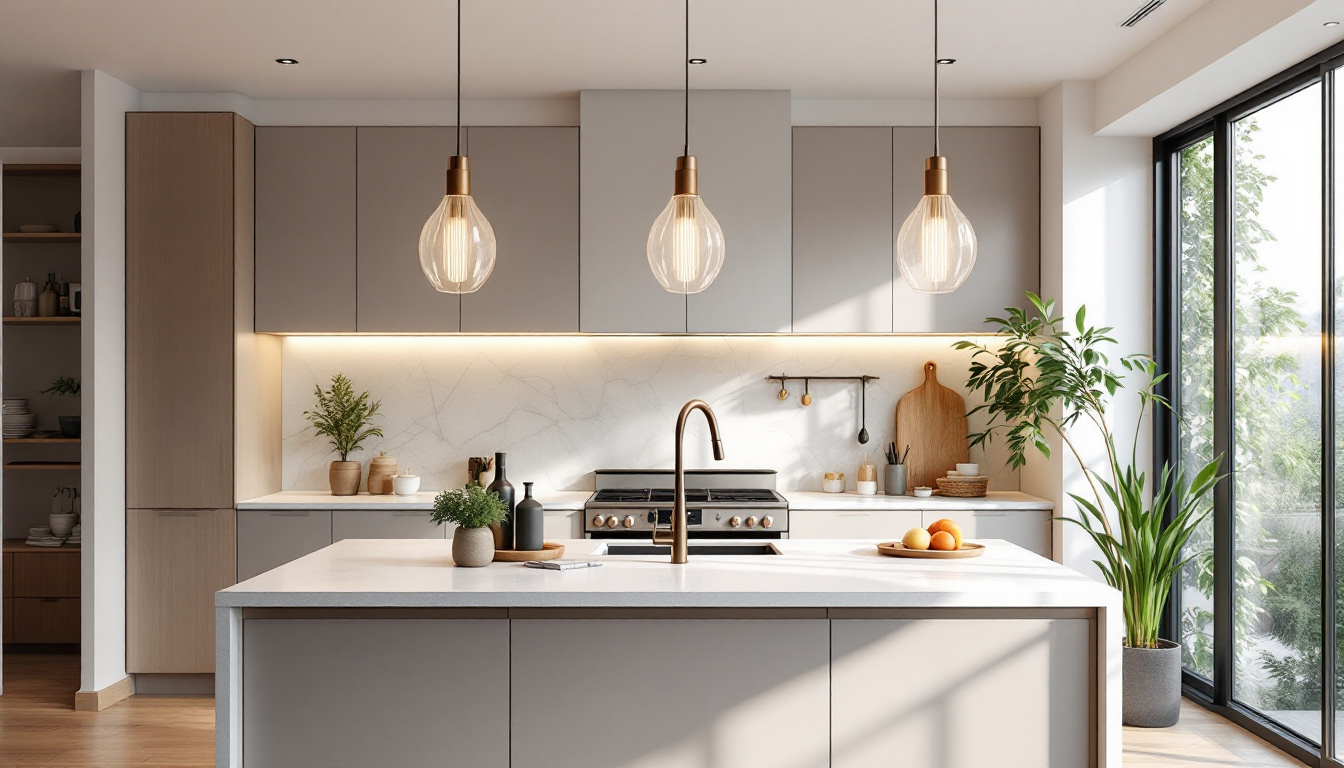
In the ever-evolving world of lighting technology, LED lamps have emerged as a popular choice among lighting contractors. With their energy efficiency, long lifespan, and versatility, they offer numerous advantages over traditional lighting options. However, like any technology, they come with their own set of challenges. This article explores the pros and cons of LED lighting, providing valuable insights for lighting contractors looking to make informed decisions for their projects.
Light Emitting Diodes (LEDs) are semiconductor devices that emit light when an electric current passes through them. Unlike traditional incandescent or fluorescent bulbs, which rely on filaments or gases to produce light, LEDs convert electrical energy directly into light, making them significantly more efficient.
LED technology has advanced rapidly, leading to a wide variety of products available on the market. From residential fixtures to commercial applications, the versatility of LED lamps is one of the key reasons they have gained traction among lighting contractors. This adaptability is not just limited to different settings; it also extends to various designs, including recessed lighting, strip lights, and smart bulbs that can be controlled via mobile apps, further enhancing their appeal.
One of the most compelling advantages of LED lamps is their energy efficiency. LEDs consume significantly less power compared to incandescent and fluorescent lights, often using up to 80% less energy. This reduction in energy consumption not only lowers utility bills for clients but also contributes to a more sustainable environment. Furthermore, the lower heat output of LEDs means that they can be used in fixtures where heat buildup could be a concern, such as in enclosed spaces or near heat-sensitive materials.
For lighting contractors, promoting energy-efficient solutions can be a strong selling point. Clients are increasingly aware of their carbon footprints and are seeking out ways to reduce their energy consumption. By offering LED lighting options, contractors can position themselves as environmentally conscious professionals, appealing to a broader client base. Additionally, many governments and local utilities offer incentives for switching to LED technology, providing an extra layer of financial motivation for clients to make the switch.
LED lamps have an impressive lifespan, often lasting 25,000 hours or more, compared to the 1,000 hours of incandescent bulbs. This longevity means fewer replacements, reducing maintenance costs for clients and increasing satisfaction with lighting solutions. The long life of LEDs also translates into less waste, as fewer bulbs are discarded over time, aligning with eco-friendly practices that many clients are now prioritizing.
Moreover, LEDs are more durable than traditional bulbs. They are resistant to shock, vibrations, and temperature fluctuations, making them suitable for a variety of environments, including outdoor and industrial settings. This durability can be a significant advantage for contractors working on projects that require reliable lighting solutions. In addition, the solid-state nature of LEDs means they are less likely to break than fragile glass bulbs, further enhancing their suitability for demanding applications.
LEDs are available in a range of color temperatures, allowing lighting contractors to create the desired ambiance for any space. Whether it’s a warm light for a cozy home or a cooler light for a modern office, the versatility of LED lamps makes them suitable for diverse applications. This flexibility is particularly beneficial in commercial settings, where different areas may require specific lighting conditions to enhance productivity or customer experience.
Additionally, advancements in LED technology have improved the color rendering index (CRI) of many products, ensuring that colors appear true to life under LED lighting. This quality of light can enhance the aesthetics of a space, making it more appealing to clients and end-users alike. Furthermore, with the introduction of tunable white and full-spectrum LEDs, contractors can now offer solutions that mimic natural daylight, promoting well-being and comfort in residential and workplace environments. This capability opens up new avenues for creative lighting design, allowing contractors to tailor solutions to meet the unique needs of each project.
While LED lamps offer numerous benefits, there are also challenges that lighting contractors must consider. Understanding these drawbacks is essential for making informed decisions and managing client expectations.
One of the most significant barriers to the widespread adoption of LED lighting is the initial cost. LED lamps typically have a higher upfront price compared to traditional bulbs. Although the long-term savings on energy bills and maintenance costs can offset this initial investment, clients may be hesitant to spend more upfront.
Lighting contractors must be prepared to educate clients on the long-term benefits of LED technology. Providing clear comparisons of lifetime costs, including energy savings and reduced replacement frequency, can help clients see the value in choosing LEDs over traditional options.
Another challenge that contractors may encounter is compatibility with existing fixtures and systems. Not all LED lamps are designed to work seamlessly with older dimming systems or specific fixtures. This can lead to flickering, buzzing, or reduced performance if not addressed properly.
It is crucial for lighting contractors to assess the compatibility of LED lamps with existing systems before making recommendations. This may involve testing different products or suggesting upgrades to dimming systems to ensure optimal performance and client satisfaction.
Although LEDs produce less heat than incandescent bulbs, they still generate some heat that must be managed effectively. Poor heat dissipation can lead to reduced performance and a shorter lifespan for the lamps. This is particularly important in enclosed fixtures where heat can build up.
Contractors should consider the design and placement of LED fixtures to ensure proper ventilation and heat management. Educating clients on the importance of selecting the right fixtures can help prevent issues related to overheating and ensure the longevity of the lighting solution.
LED technology is incredibly versatile, making it suitable for a wide range of applications. Understanding the various uses of LED lamps can help lighting contractors tailor their offerings to meet client needs effectively.
In residential settings, LED lamps are commonly used for general lighting, accent lighting, and task lighting. Their ability to produce warm light makes them ideal for creating cozy atmospheres in living rooms, bedrooms, and dining areas.
Furthermore, with the rise of smart home technology, many LED products now come with smart features, allowing homeowners to control lighting remotely or set schedules. This added convenience can be a significant selling point for contractors working on residential projects.
In commercial spaces, LED lighting is increasingly used for its energy efficiency and longevity. Offices, retail stores, and warehouses benefit from the reduced energy costs and minimal maintenance requirements associated with LED technology.
Additionally, the ability to customize color temperatures and brightness levels allows contractors to create tailored lighting solutions that enhance productivity and customer experience. For example, cooler lighting can be used in office environments to promote alertness, while warmer lighting can create inviting atmospheres in retail spaces.
Outdoor applications for LED lighting are vast, ranging from streetlights to landscape lighting. The durability and weather resistance of LED lamps make them an ideal choice for exterior installations, where they can withstand various environmental conditions.
Moreover, LED technology allows for creative outdoor lighting solutions, such as color-changing fixtures for events or architectural lighting that highlights building features. Contractors can leverage these capabilities to offer innovative designs that enhance outdoor spaces.
The landscape of LED lighting is continuously evolving, with new trends and technologies emerging regularly. Staying informed about these developments can help lighting contractors remain competitive and offer cutting-edge solutions to their clients.
As smart home technology becomes more prevalent, the integration of LED lighting with smart systems is expected to grow. This includes features such as remote control, automation, and integration with other smart devices in the home or office.
Contractors should familiarize themselves with smart lighting options and consider offering these solutions to clients. This can enhance the overall value of their services and position them as forward-thinking professionals in the industry.
With increasing awareness of environmental issues, sustainability is becoming a significant focus in the lighting industry. LED technology aligns well with these initiatives due to its energy efficiency and reduced carbon footprint.
Lighting contractors can capitalize on this trend by promoting the sustainability benefits of LED lighting. This includes highlighting energy savings, reduced waste from fewer replacements, and the potential for using recycled materials in LED products.
Recent advancements in color technology are allowing for more dynamic and customizable lighting solutions. This includes tunable white LEDs, which allow users to adjust the color temperature throughout the day to mimic natural light.
Contractors who stay abreast of these advancements can offer clients innovative lighting solutions that enhance well-being and productivity. This can be particularly appealing in commercial settings, where lighting can have a significant impact on employee performance and satisfaction.
LED lighting presents a myriad of opportunities and challenges for lighting contractors. Understanding the pros and cons of this technology is essential for making informed decisions and providing clients with the best possible solutions. By leveraging the energy efficiency, longevity, and versatility of LED lamps, contractors can enhance their offerings and meet the evolving needs of their clients.
As the industry continues to evolve, staying informed about trends and advancements will be crucial for success. By embracing LED technology and its potential, lighting contractors can position themselves as leaders in the field, ready to tackle the challenges and opportunities that lie ahead.
Ready to harness the full potential of LED lighting for your next project? Look no further than LumenWholesale for a superior selection of spec-grade lighting products at unbeatable wholesale prices. Say goodbye to inflated markups and hello to high-performance lighting that meets the highest industry standards. With LumenWholesale, bulk buying is a breeze, thanks to our hassle-free process and free shipping. Elevate your lighting solutions with the perfect blend of quality, affordability, and convenience. Discover wholesale lighting at the best value today and light up your projects with confidence.

Discover essential tips for lighting contractors to effectively install strip under cabinet lighting without common pitfalls.

Discover effective strategies to train your team in using grow lamp fixtures, enhancing productivity and plant health.

Discover the answers to lighting contractors’ most common questions about pendant light fixtures for kitchens.

Discover effective strategies for training your team in the art of lighting with hanging pendant lamps.